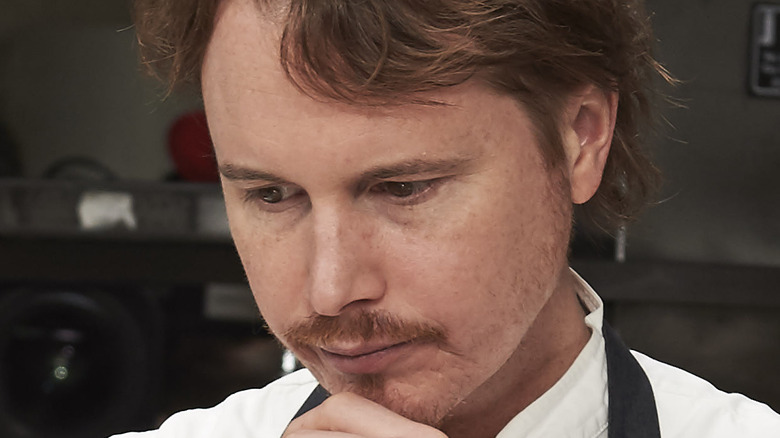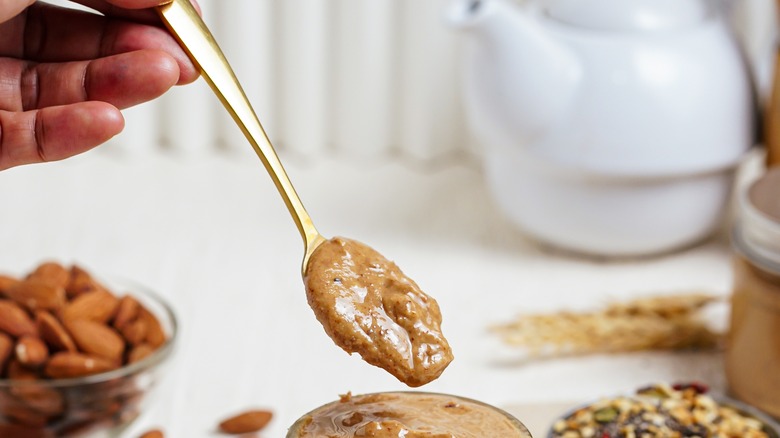How Grant Achatz Reinvented Peanut Butter And Jelly
American restaurateur and chef Grant Achatz didn't find success serving up dishes in an expected way. Marrying science and fine dining, Achatz has turned to lab equipment to contrast the texture and taste of known foods, resulting in what Wired describes as "otherworldly effects that return a sense of play and joy to the table."
Having grown up in family-run restaurants, Achatz was primed to make his mark in the restaurant industry as Four Magazine notes. His Chicago restaurant has been described as one of the best restaurants in the world and is one of 14 American restaurants to earn three Michelin stars (per Tock).
To the Culinary Institute of America, Achatz describes his work as Progressive American: "Progressive being the utilization of cutting-edge technique and the exploration of creativity. And, American being eclectic ingredients and regional items, and more of a global melting pot of cuisine styles." So of course, Achatz has taken a very American recipe — the PB&J – and recreated it his own way.
A creative approach to a traditional PB&J sandwich
The history of peanut butter and jelly sandwiches can be traced back to the early 1900s. National Peanut Board reports the first mention of the sandwich can be found in the Boston Cooking School Magazine of Culinary Science and Domestic Economics. Leave it to Achatz to give this tasty relic an upgrade.
"When we start looking at things really critically or even very simply, we realize that there's more than one way to actually get the same results," Achatz told NPR, "You're deconstructing the components of a course and putting them back together." He's done just that with his unique PB&J recipe, taking the basic elements of the sandwich and reconfiguring them. Instead of bread slices, Achatz wraps brioche around a single grape that has been dipped into peanut puree (via Fine Dining Lovers). Servers instruct diners to "Eat it like Cleopatra eating grapes," as recorded by One Way Street, for the lone grape is still attached to its stem.
At-home chefs can attempt their own versions; Achatz has included the recipe in his restaurant's cookbook, Alinea. As one culinary hobbyist observes, "The cleverness here is obviously in the presentation, but the flavors are 100% recognizable and understandable." The modern presentation might not be for everyone, however. Another recipe experimenter laments, "I love the idea of this dish, but for me, I'd rather harness the Achatz technological prowess to build a time machine and go back and eat the peanut butter sandwiches of my childhood with a cold glass of milk, in my elementary school cafeteria, with a game of kickball or jump rope right after, and a walk home in the warm sun."

